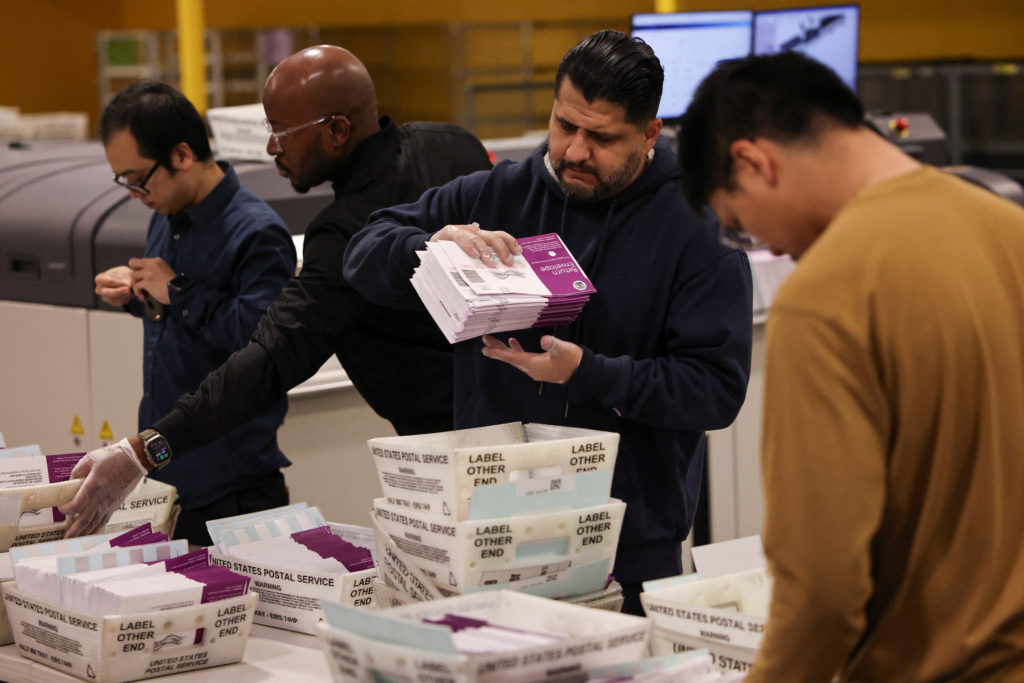Headline U.S. inflation jumped to 2.7% in June, its steepest rise in five months, according to the latest consumer price data. UBS Global Wealth Management took a look under the hood, writing in its monthly letter that “it’s quiet … a little too quiet.”
Chief investment officer Mark Haefele appealed to the cinephiles in his audience: “Movie fans will know that feeling of tension when the hero steps into supposedly dangerous new territory only to find nothing there.” The TACO traders are waiting for the next shoe to drop, tariffs are at their highest since the 1930s, and the Federal Reserve’s independence is threatened, he writes. Yet global stocks are at record highs, rate volatility is down, and credit spreads are tightening.
Haefele looked under the hood of headline inflation to isolate the reading for “core goods” in June, arguing that this is where the tariff impact is being revealed, as its June increase showed a two-year high. Much of the recent acceleration reflects price hikes in goods most exposed to the new tariffs—household furnishings, appliances, electronics, apparel, and toys. There’s also a lag between when tariffs are announced, when importers stockpile goods, and when stores finally pass those costs on to shoppers, meaning this should increase in coming months.

UBS Global Wealth Management
All about the lag
UBS Global Wealth Management notes that data in the weeks and months ahead will be key to determining whether core goods truly are surging, reflecting the impact of tariffs. Indeed, industries that rely heavily on imports are feeling the pinch first. Retail sales in categories such as electronics and home furnishings have dropped by 2% and 1.1%, respectively, once adjusted for inflation, as households begin to curb spending in response to higher prices. Conversely, overall retail sales volumes are still up 0.4% month over month, and consumer spending remains relatively resilient.
Who bears the burden?
A central question remains on tariffs: Who pays for them—exporters, importers, or consumers? Haefele cautions that it’s unclear how exporters, importers, or consumers will divide the economic costs. The split will likely differ by industry, product, and market position.
Some companies, such as General Motors, have already reported a direct hit: GM’s second-quarter earnings took a $1.1 billion loss as a result of tariffs, leading to a 32% decline in core profit. The automaker is responding with a mix of price increases, cost-cutting, and supply-chain adjustments, but warns that a continued tariff environment could further squeeze margins or eventually force higher prices onto buyers. Across the wider business community, company executives are now addressing tariffs in earnings calls.
Haefele said UBS will closely watch retail sales, inflation, and consumer spending data, while listening for comments in the ongoing second-quarter earnings season about who will truly be “eating the tariffs,” to paraphrase President Donald Trump.
Policy offsets and Fed dilemmas
Some fiscal offsets may be on the way. The recent “One Big Beautiful Bill,” which contains extended and new tax cuts—partly funded with tariff revenue—could help stimulate the economy. But the amount of that revenue is unclear.
Risks tilt in both directions. If tariffs fuel a larger-than-expected inflation surge, consumer spending may slow and the Federal Reserve could be forced into a tough policy corner, balancing price stability against economic growth. Alternatively, if companies absorb more costs to maintain market share, profits could slump, further weighing on investment and labor markets.
For now, the lagged nature of tariffs means their full effect is only beginning to show up beneath the surface of headline inflation. Economists and policymakers will be closely monitoring core inflation, retail sales, and corporate margins in the months ahead. The only certainty, it seems, is that tariffs are no longer an abstract policy debate: They are beginning to hit home—one price tag at a time.
For this story, Fortune used generative AI to help with an initial draft. An editor verified the accuracy of the information before publishing.
Source link

